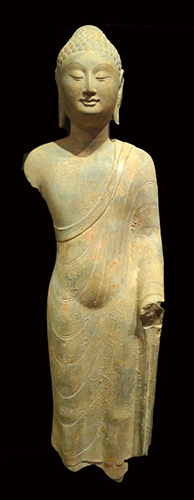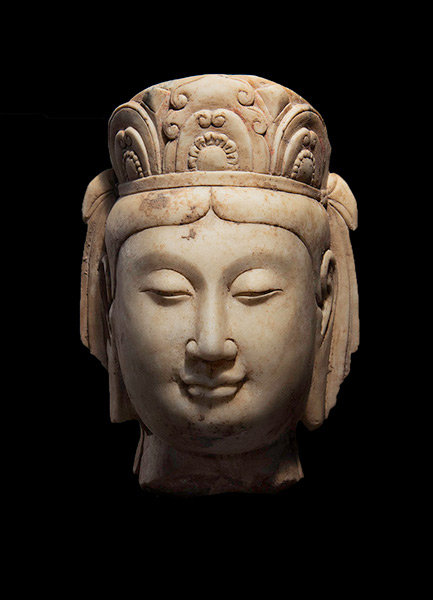On view now in New York via Throckmorton Fine Art is an exciting opportunity to view outstanding northern dynastic sculpture from China between 386 and 577 C.E.
The fourth through the sixth century in China was a particularly rich period of artistic production for the Northern Wei, Eastern Wei, and Northern Qi dynasties — especially with regard to gorgeous sculptures. Many of the works in the exhibition were commissioned from the Imperial courts, meaning they are of the highest quality and craftsmanship.

“China Standing Buddha,” circa 550-577 C.E., limestone, 38 in. (c) Throckmorton Fine Art 2016
Especially exciting is the exhibition’s spotlight on Buddhism’s rise in China during the second century C.E. Gallery owner Spencer Throckmorton suggests, “Images of the Buddha and Bodhisattvas became central to the religious worship, as they were believed to have been created by merit and could convey merit simply by the worshiper contemplating them. The patrons and imperial families and individuals who commissioned the sculptures, and funded the shrines, temples and monasteries where they were placed, gained merit through such generosity. We are fortunate to be able to enjoy this abundance of imagery today through the survival of the sculptures on display here.”
“Early Chinese Buddhist Sculpture from Northern Dynasties” opened on March 3 and will be on view through April 23. To learn more, visit Throckmorton Fine Art.
This article was featured in Fine Art Today, a weekly e-newsletter from Fine Art Connoisseur magazine. To start receiving Fine Art Today for free, click here.







